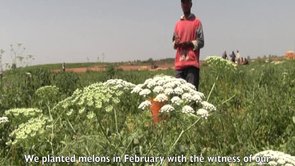Tag: Beit Hanoun
-
Awad, 19, wounded by Israeli fire while gathering firewood
31st July 2013 | International Solidarity Movement, Rosa Schiano | Gaza, Occupied Palestine On Thursday afternoon, July 25, 2013, a 19 year old, Rafat Awad Abdel Aty was injured while working in an area called “Jamarik” near Beit Hanoun in the northern Gaza Strip. Awad, who was admitted to the Kamal Odwan hospital, told us…
-
Mass protest aims to focus attention on Jerusalem
16th June 2013 | The Electronic Intifada, Joe Catron and Patrick Strickland | Occupied Palestine Activists demonstrated internationally on Friday as part of efforts to focus attention on Israel’s aggression against Palestinians in Jerusalem. Known as the Global March to Jerusalem, the protests marked the 46th anniversary of theNaksa (setback) — Israel’s 1967 occupation of the Gaza Strip and West Bank, Syria’sGolan Heights,…
-
Video: Farming in Beit Hanoun, Gaza Strip
14th June 2013 | International Solidarity Movement, Gal·la | Gaza, Occupied Palestine Saber Al-Zaneen, coordinator of farmers in Beit Hanoun (north Gaza Strip), explains how difficult it is for farmers to work in that area, the disproportional violence they have to face daily and the danger they are exposed to with no reason.


